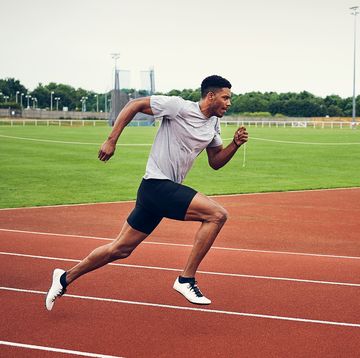According to purists, the best supplementary workout for runners is more running. There’s some truth to this, but many top athletes also strength train. By working weak muscles and correcting imbalances, these runners hope to reduce their injury risk, which will allow them to run even more. More subtly, strength training boosts running economy, allowing you to hold the same pace while burning less oxygen. And all of this becomes even more important once you reach your mid-30s and start fighting age-related muscle loss.
The challenge is that endurance and strength training place competing demands on your body. To get the most out of your strength sessions without compromising your running, keep the following guidelines in mind.
An introduction to open-water swimming
Recent studies have shown that tiny dumbbells, big barbells or body-weight exercises can produce similar gains as long as you lift to momentary failure, the point at which you can’t complete another rep with perfect form. Include two or three exercises each for the upper and lower body, plus some that target core and hip strength; aim for three sets of each exercise, twice a week.
To optimise running economy, focus on lower-body exercises that recruit large amounts of muscle all at once, like weighted lunges and squats. Or, include explosive plyometric exercises like two-legged and one-legged jumps, and eventually drop jumps, which involve stepping off a low box or step and then jumping as high as you can as soon as you land.
When to lift
Runners should generally run before lifting weights, because trying to run after can change your mechanics, potentially ingraining bad habits. Lift weights either immediately after a hard workout or later the same day. That makes your hard days extra-hard but ensures that you can recover on easy days.
You don’t have to lift hard all year long. Studies have found that a six-week block of focused strength-training during a race build-up is sufficient to boost performance. It’s still good to keep up a low-key maintenance program throughout the year, but you can reserve lifting to failure to coincide with preparing for goal races. Scale back your lifting two weeks before race day, and don’t lift at all during the last week to recover without detraining.
The best leg machines for runners
A hard run plus a strength session might leave you jelly-legged the next day. Make sure that you’re getting enough protein to help your muscles repair - not just right after the workouts, but throughout the day. Aim for four to five doses of about 20 grams of protein (e.g. two eggs and a cup of milk), including one just before bed.
To deal with next-day soreness, you can try aids like ice baths and compression garments, but it’s far better to prevent soreness by progressing your strength routine slowly. If you haven’t been lifting weights, take a six-week block to build up to lifting to failure. Be similarly cautious when trying new exercises. You should be tired when you wake up the day after an interval-weights double - but if you can’t get out of bed, you’re not getting faster.













